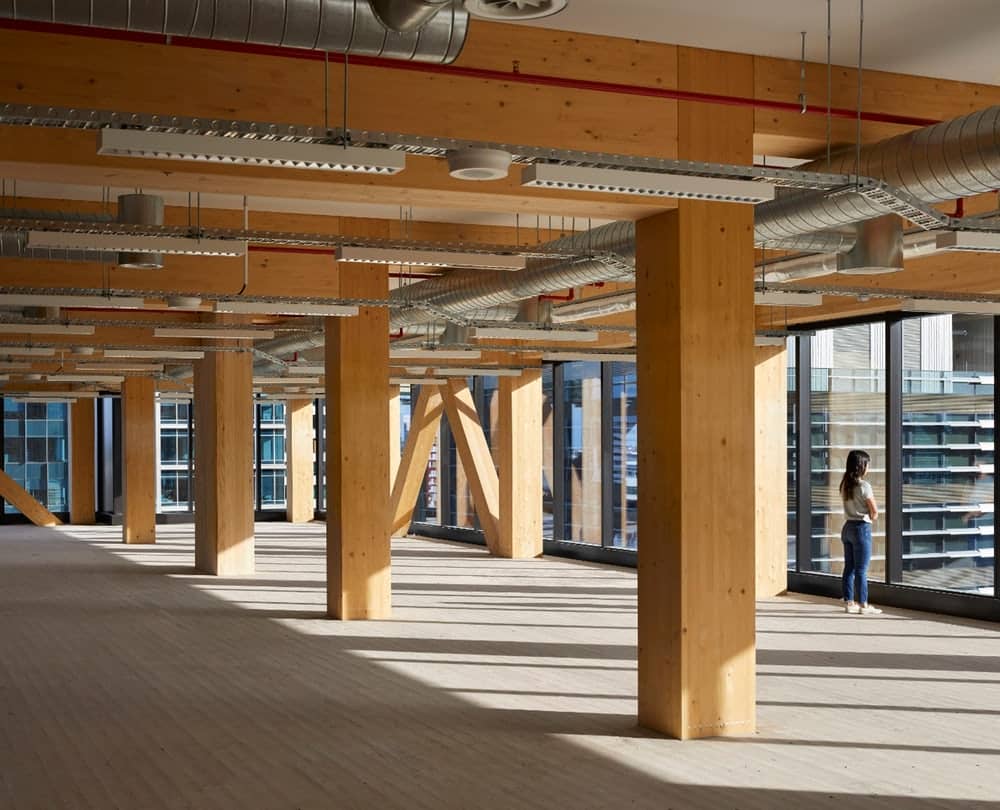Skyscraper developers all over the world are turning to timber materials for the construction of buildings. Development of a high rise building in Australia is the latest example of using timber. The tower is called the tallest timber structure. The wooden structure and glass give an aesthetic view from inside and outside as well. The timber tower, named 25 King by Australian architecture firm Bates Smart, has 10 stories and it is 45m tall, located in Brisbane. The building was opened last week, and according to the developers, this is the tallest timber structure and has raised the bar of building design for the commercial world.


Usually, steel and concrete are used in the construction. However, the firm used highly engineered wooden materials this time. The materials consist of Glulam (glued laminated timber) and CLT (cross laminated timber). The manufacturing of these didn’t cause as much carbon footprint as it does when concrete and steel is used. Most of the components of the building were prefabricated off-site. This resulted in reducing the on-site waste and construction time a lot. The entire construction was completed in almost 15 months. Huge V-shaped columns were stacked on top of each other to support the timber slabs which are used for floorplates and exposed the ceiling soffits. This also added a beautiful aesthetic look inside the building as well.


Philip Vivian, director of Bates Smart, said, “25 King reflects a turn towards making buildings and spaces that are warm and inviting. We know that people want to connect to nature, and using timber on the exterior and interior of buildings helps complete the connection, making people feel more at ease within the built environment.” The bottom floor has colonnade homes, cafes, and restaurants. The remaining nine stories are used as an open-plan office space. The support columns are arranged strategically to keep their size to a minimum and maximum flexibility of the area.



The company says that this method of construction was when compared to conventional building practice, 46% of the reduction in energy consumption, 29% of the decrease in potable water use and 74% saving in embodied carbon was noticed. Many other sustainable features of the building include rainwater harvesting, energy efficient lighting, a greenery-covered wall in the entrance lobby, optimized air conditioning, and aluminum sun-shading to keep the interior cool. Vivian said, “Each time an engineered timber project completes, architects, learn more about CLT’s potential as a new building material and how we can work and innovate with it on all types of buildings. This building marks a genuine commitment to CLT from the industry. It’s exciting to see the ideas take hold and evolve across the globe, and we’re happy to contribute with the lessons we’ve learned on 25 King.”



My wife and I have just built a CLT house in Tasmania and it is a fabulous material to use in the Tassie climate. Visitors welcome to come and check it out!